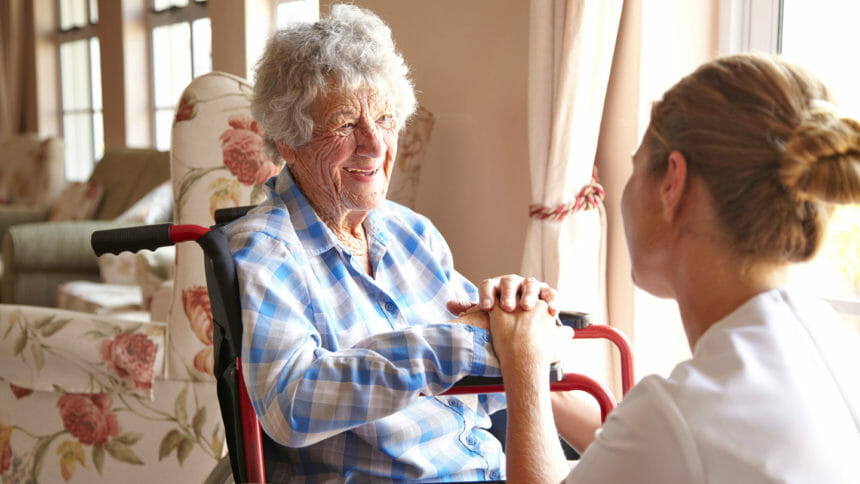
The new coronavirus point-of-care testing program unveiled by the government, while not perfect, offers an opportunity for long-term care facilities to swiftly identify those residents, staff or family members who are positive for COVID-19, two people familiar with long-term care laboratory services said.
“It gives more flexibility to the facility,” Cynthia Morton, executive vice president of the National Association for the Support of Long Term Care, said. She, along with Christopher Martin, president of American Health Associates, the largest lab serving nursing homes, talked to McKnight’s on Wednesday about the initiative and its pros and cons.
Last week, the Centers for Medicare & Medicaid Services disclosed that it intended to send point-of-care, or antigen, testing instruments to 2,000 long-term care facilities in hotspot areas. Ultimately, the agency said, it plans to send the instruments to the country’s 15,400 nursing facilities by this fall.
Besides a quicker turnaround time, one of the benefits of antigen testing is its sensitivity. The sensitivity is reported to be around 80%, Martin noted. Those who test positive for COVID-19 through point-of-care testing can be confident they are truly positive, he said. Meanwhile, those who test negative may want to confirm their results with a standard polymerase chain reaction (PCR) test, which a regular lab performs. Because an antigen test costs about $25, compared to the price tag of approximately $100 that comes with a PCR test, facilities can feel more comfortable using the antigen test more frequently.
Facilities can use the antigen test in different ways, Morton noted.
“I see it as a tool that some facilities can use to fit into what their scenario is,” she said. “Some may have a lab that is serving them and allowing them to get results quick. Others could rely on this machine for pockets of [potential use] in their facility and it’ll be kind of a lifeline for them.”
In one possible scenario, a facility, under pressure to increase visitation, could use point-of-care tests just for family members.
“It’s not going to be one use case across the country,” Morton said. “This machine might fit some of the testing they need.”
“I think it could be a game changer for some … It’s not going to be a one-size-fits all,” she added.
One downside to the point-of-care test is that it relies on a skilled individual to administer the test in the nursing home. (Lab technicians conduct the gold-standard PCR tests.)
“If a lab technician is not performing the [point-of-care] test … that introduces the potential for a poor test outcome,” Martin noted.
And while the new tests offer a new opportunity for facilities to test more regularly for COVID-19, the tests cannot totally replace traditional PCR and blood-serum tests, Martin explained.
“These instruments will not replace broad-scale testing to identify and manage outbreaks,” he said. He added that the point-of-care tests actually may create more of a need for broad-scale testing as a result of the need to confirm negative results.





